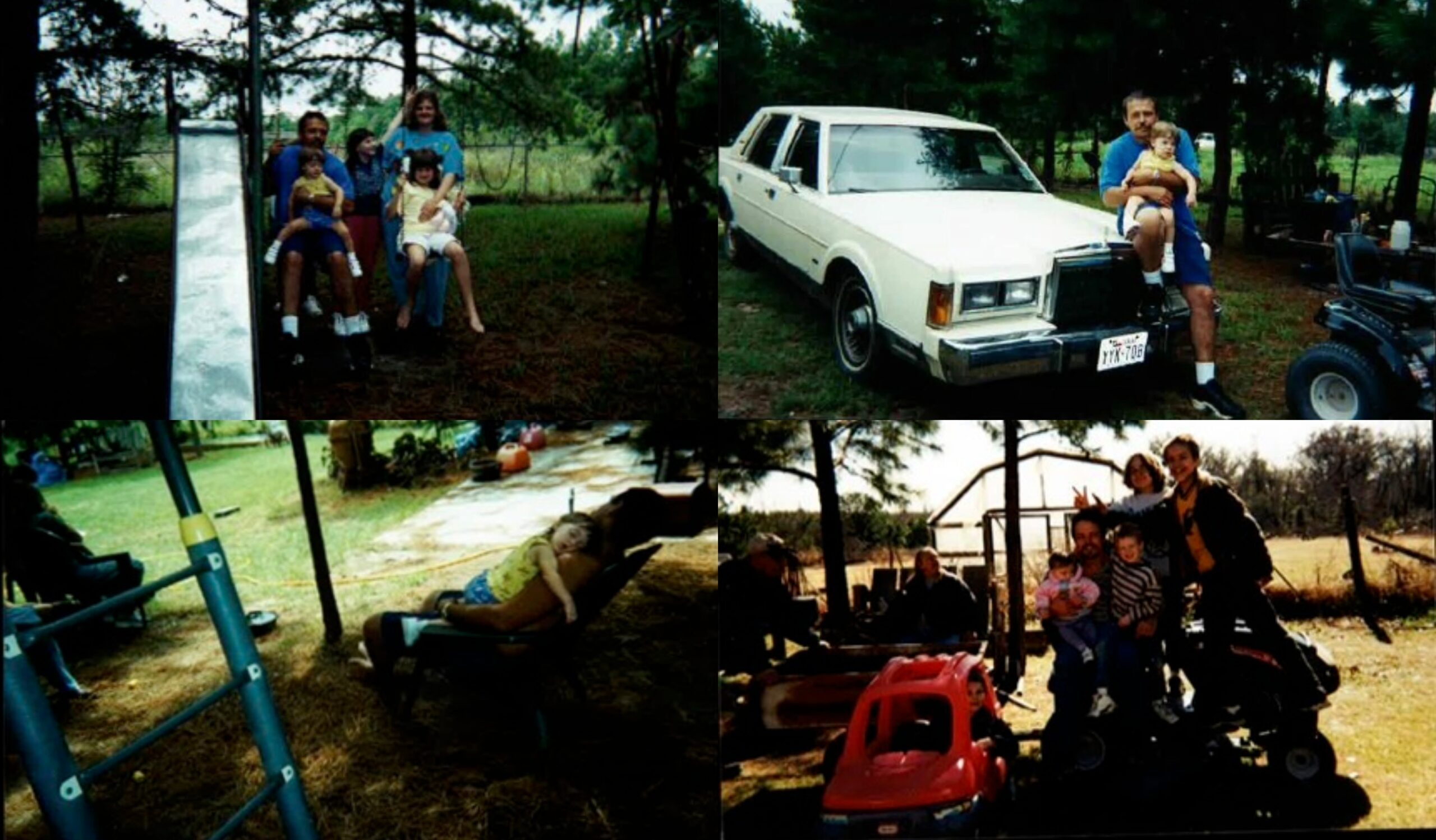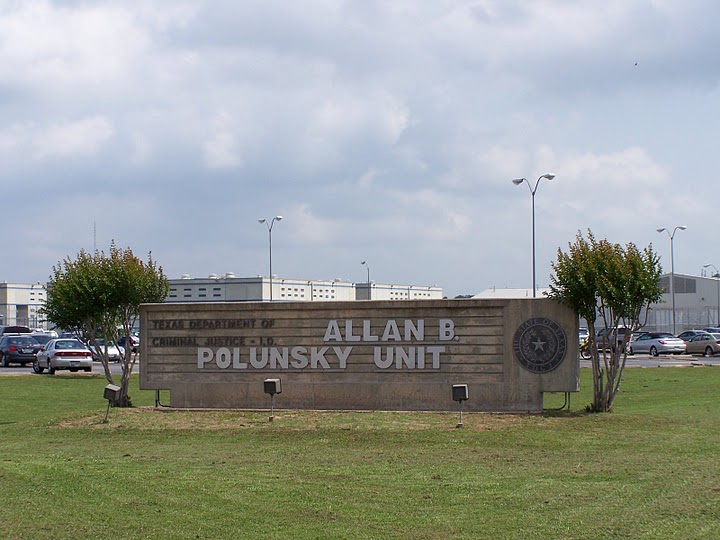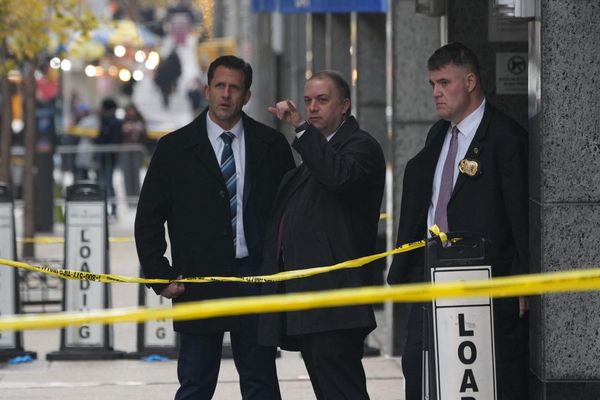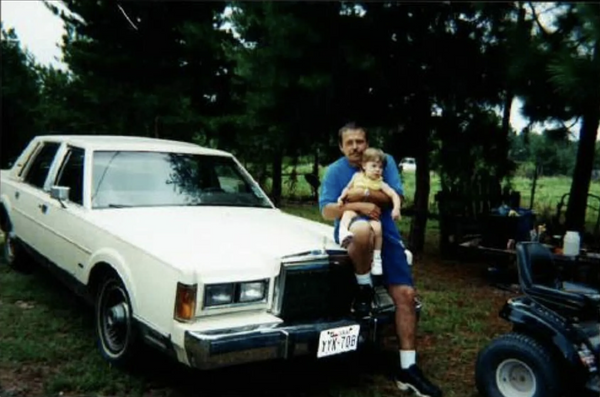Update: On September 11, shortly after this story originally published, the Texas Court of Criminal Appeals dismissed both a habeas corpus application and a motion for stay of execution filed by Robert Roberson’s defense team. This decision means the state’s top criminal court will not intervene to extend Roberson’s life. “Robert’s fate is now at the mercy of [Governor Greg Abbott]. He and the Texas Board of Pardons and Paroles are the only ones standing in the way of a horrific and irreversible mistake: the execution of an innocent man,” said Roberson’s attorney, Gretchen Sween, in a statement. Roberson is scheduled to die on October 17.
The hearing on the innocence claims of a condemned man began on August 14, 2018, with what seemed like a major setback.
Defense attorney Gretchen Sween—who represented Robert Roberson, III, a father convicted of killing his 27-month-old daughter in 2002—told Anderson County Judge Deborah Oakes Evans that crucial pieces of evidence were missing. Scans of the young girl’s head, made in the weeks before her death and shortly before she died, were nowhere to be found.
Sween believed those lost records could have provided crucial context to Nikki’s death. The day after Nikki was brought to the hospital, a child abuse pediatrician diagnosed “shaken baby syndrome”, and the following day, the pathologist who performed the autopsy declared the death a homicide. If new experts could review those scans, they could help determine whether Nikki truly died of abusive trauma, or whether Roberson’s story that Nikki had fallen out of bed and sustained a head injury was the truth.
The jury in Roberson’s original 2003 trial had never seen these scans. Neither had one of the prosecutor’s key witnesses: Dr. Jill Urban, a forensic pathologist with the Dallas County Medical Examiner’s Office, who performed Nikkis’ autopsy. The scans were referenced in medical records, so attorneys knew they existed—they had been asking for them for years.
It seemed as if they would remain forever lost, Sween told the court. Anderson County District Attorney Allyson Mitchell—who took office in 2015, 12 years after Roberson’s initial trial—claimed to have searched their evidence storage areas “from top to bottom” and came up empty, according to a hearing transcript.
Roberson, sent to prison 15 years before and now in middle age, watched the hearing over dark-framed glasses. He was clad in a jail-provided black-and-gray striped jumpsuit and sat with his hands on the table, handcuffs around his wrists. He watched Sween question one witness, a nurse who had seen Roberson the morning he took his daughter Nikki into the emergency room, before the court took a brief recess. Then, lawyers from both sides were called into Judge Evans’ chambers to discuss a shocking discovery: The scans had been found.
District Clerk Teresia Coker, who had been sworn in two weeks before, had gone into the century-old courthouse’s basement after hearing about Sween’s motion. There, she discovered a box of evidence from the case, including an envelope containing the scans. She quickly alerted the judge. (Coker declined to speak with the Texas Observer for this story.)
Sween likens the surprise discovery to a scene from the legal drama Perry Mason. Everyone—the defense, the Republican district attorney, and the veteran judge—said they were completely shocked. “Everybody agreed we needed to shut things down to understand the significance,” she told the Observer.
In light of the newfound scans, the evidentiary hearing was paused and wouldn’t resume until March 2021, after being stalled further by the COVID-19 pandemic. When it finally resumed, the defense presented expert testimony, including a report from pediatric radiologist Dr. Julie Mack, who had examined the long-lost scans and found evidence of a single impact site. Her finding seemed to support Roberson’s account that his daughter fell out of bed, an innocence claim unchanged since that morning in 2002.
But the finding contradicted testimony given by the Dallas forensic pathologist about multiple impact sites on the child’s head, a conclusion that supported the prosecution’s argument that Nikki’s head trauma was intentional.
“Science always shifts.”
The cause of death in this case is most widely known as shaken baby syndrome (SBS), more recently renamed to abusive head trauma. (In this story, SBS will generally be used from this point on.) The way this diagnosis is reached has been controversial in other high-profile prosecutions involving parents or caregivers accused of killing children who died under suspicious circumstances. Nationwide, doubts raised about the diagnostic process in other childrens’ deaths have been linked to 34 exonerations since 1992, including 11 in the past five years, according to the National Registry of Exonerations.
Experts are uniquely troubled by this trend, since a faulty determination of SBS can allow people to be convicted of crimes that never actually occurred.
Texas was the first state in the nation to pass a “junk science law”, which allows people to appeal convictions based on outdated or debunked forensic science. But since the law passed in 2013, no Texans on death row have successfully used it to get a new trial. Roberson’s lawyers continue to argue he deserves one. But time isn’t on their side: Roberson is scheduled for execution October 17.
If the execution isn’t halted, Roberson would be the first person put to death in the United States based on an SBS diagnosis.
Nikki was Roberson’s third child, born in 1999 to a woman he had a short relationship with. Nikki’s mother—who was unhoused and lived with drug addiction, according to court records—lost custody soon after the girl’s birth. The toddler had been ill most of her life. Records show she got her first infection as a newborn and developed multiple antibiotic-resistant infections in the following months. She also had breathing issues, which would cause “her to suddenly cease breathing, collapse, and turn blue.”
Defense lawyers argue that much of his child’s medical history was unknown to Roberson, who had only recently learned about Nikki and gotten custody shortly after her second birthday. Roberson had spent time in prison for burglary and passing bad checks, but by 2001, he was working as a newspaper deliveryman in Palestine, a town of under 20,000 in east Texas. He lived in a small house, and Nikki regularly shared a bed with him, a mattress on top of cinder blocks.
The young girl had been sick for days. Roberson had taken her to the doctor for symptoms that included coughing, vomiting, diarrhea, and a fever of up to 104.5 degrees Fahrenheit. According to Roberson’s defense team, around 5 a.m. on January 31, 2002, Roberson woke up to find Nikki had fallen out of bed and was lying on the floor. He said he consoled Nikki, and they both went back to sleep. When he woke up again around 9 a.m., he found she’d turned blue.
He drove her to the Palestine Regional Medical Center emergency room, where doctors intubated her, restarted her heart, and performed CAT scans. The scans—those later lost in the Anderson County courthouse for more than a decade—would reveal brain swelling and bleeding near a bump on the back of her head. She had no broken bones or neck injuries.
Nikki was transferred to Children’s Medical Center Dallas, where Janet Squires, a pediatrician, theorized that Nikki’s condition was caused by abuse. Squires recorded symptoms that were believed at the time to be a strong indication of SBS. Doctors looked for bleeding between the skull and the brain, brain swelling, and bleeding in the back of the eyes. After Squires made the diagnosis, Nikki was taken off life support without her father’s consent and died. Roberson was arrested before any autopsy was performed.

There is no debate among the medical community that shaking and hitting an infant is dangerous. But the way the diagnosis of SBS was reached in the past—the version of the diagnosis used to convict Roberson—was based on a particular set of symptoms believed to be unique to abusive trauma. This idea has since fallen out of favor. Today, abuse is typically diagnosed only after other factors have been ruled out. Doctors generally consider past medical history and evidence of past and previous falls and accidents before reaching conclusions.
That’s partly because previous diagnoses of SBS have been discredited in other cases in which parents were wrongfully prosecuted or lost custody of their children after being falsely accused of child abuse. In 2021, Texas lawmakers passed legislation giving parents the right to a second medical opinion before children are removed from the home—but that measure is no help to Roberson.
Despite expert testimony and information gleaned from the lost scans, Judge Evans affirmed Roberson’s conviction and death sentence in February 2022. The following year, the Texas Court of Criminal Appeals (CCA) upheld Evans’ decision, and the U.S. Supreme Court declined to hear the case. But Roberson’s lawyers continue to plead with the CCA to take another look, saying the evidence suggests Nikki’s death was tragic but natural.
This isn’t the first time Roberson has faced an execution date: In June 2016, the CCA stayed his impending execution and asked the trial court to look at the argument that the SBS hypothesis posited in Roberson’s trial was “junk science.” Since then, the defense has found even more medical evidence that it is asking the courts to consider. In a July filing to the CCA, Roberson’s lawyers argued that the head injury didn’t really kill the little girl. They say other medical records show she likely died of double pneumonia—viral and bacterial—and sepsis.
There were no references to pneumonia in Roberson’s initial trial. But lung pathology expert Dr. Francis Green wrote in a new report for the defense that the double infection had starved her body of oxygen. Nikki also suffered from a blood disorder, according to court records, which could have affected how her body reacted to attempts to revive her. Medications may have played a role too, lawyers argue: In the week before her death, doctors had prescribed phenergan and codeine, medications that affect breathing and would no longer be prescribed to a child of 2.
“At the time of Robert’s trial, no medical expert considered the combination of pneumonia, dangerous medications, and a short fall as explaining Nikki’s condition and subsequent death,” Roberson’s attorneys wrote in a July writ of habeas corpus.
Even Brian Wharton, the lead Palestine Police Department detective on Roberson’s case who testified for the state in 2003, has abandoned his theory that Nikki died from abuse. “I have come to believe that Nikki died of accidental and natural causes. I am convinced that she was not murdered. Roberson is innocent. There was no crime,” Wharton, who retired in 2006 after becoming assistant chief of the Palestine Police Department, wrote in a Dallas Morning News op-ed in May. “I believe this because the ‘science’ that was used to obtain Roberson’s arrest and conviction has changed drastically since his arrest.”
Defense lawyers continue to ask the state’s top appeals court to consider changes in scientific understanding since his conviction more than 20 years ago.
SBS was widely accepted in the medical and legal communities at the time of Roberson’s trial in 2003. More than 3,000 convictions in the United States had been secured based on SBS as of 2018, according to D Magazine. Robert’s original defense lawyer conceded his client’s guilt against Roberson’s wishes, telling the jury, “This is not a capital case and the evidence will not support it. This is, however, unfortunately a shaken baby case.”
Roberson’s subsequent lawyers didn’t investigate or fight the SBS hypothesis in initial appeals. It wasn’t until 2016 when Texas Defender Service took over his representation and recruited Sween that attorneys began to investigate his actual innocence.
SBS as a medical hypothesis dates back to the 1970s, when scientists posited the idea that in infant deaths with internal but no external injuries, shaking might be to blame. Because it was believed that shaking injuries would cause immediate symptoms, whoever was last with the child often became suspected of abuse. (One early proponent of that hypothesis, pediatric neurosurgeon Norman Guthkelch, has since become a vocal critic.)
“It didn’t take long after that before prosecutors began recognizing that this was a tool they could use to prosecute,” said Keith Findley, co-editor of the 2023 book Shaken Baby Syndrome: Investigating the Abusive Head Trauma Controversy. Findley told the Observer there was a prevalent notion that doctors could presume abuse if they saw a trio of symptoms: subdural bleeding, brain swelling, and retinal hemorrhages. When Nikki was admitted to the ER the morning of January 31, 2002, doctors noticed she had those three symptoms.
Academic and medical literature from the 1990s and early 2000s shows that doctors were told there was a strong association between this “triad” of symptoms, as some put it, and abuse. Some articles posited that the constellation of symptoms was “virtually unique to this type of injury.” In 1993, the American Academy of Pediatrics (AAP) adopted the idea of SBS; in 2001, the AAP clarified that there was a possibility symptoms could exist outside of the context of abuse but that doctors should be “alert to the possibility.”
Debate intensified as parents and others convicted of abuse solely on the basis of doctors’ diagnoses of SBS continued to fight their cases. Andre Asnes, executive committee member of the AAP Council on Child Abuse and Neglect, told the Observer that—despite the term’s appearance in medical literature—practicing clinicians never widely adopted the “triad” standard for diagnosing surefire abuse. “Rather, it is an invention whose use is confined to the courtroom.”
Findley told the Observer that there’s a need for further cross-disciplinary investigation of SBS and that legal proceedings need to account for the changes in understanding over the past 20 years. “Science always shifts,” he said.
By the time Roberson arrived on Texas death row, researchers had already begun to question the legitimacy of the diagnostic criteria for SBS. One high-profile skeptic, Dr. John Plunkett, testified in multiple cases that it was possible for short falls to mimic the markers of supposed abuse. After Plunkett testified for the defense in an Oregon case that led to a daycare worker’s acquittal in 2001, the district attorney prosecuted him on a misdemeanor charge similar to perjury. He was acquitted.
In 2009, the AAP updated its definition of abusive head trauma (i.e. SBS) to expand beyond symptoms associated with shaking and, in 2020, it specified that current diagnostic practices for the condition should rely on the big picture rather than a small set of certain symptoms. Researchers continue to find evidence that illness, genetic conditions, and short falls can cause what once was attributed to shaking, though the AAP still specifies that some symptoms are more common to abuse than accidents.
The Texas Department of Family and Protective Services reported in March 2024 that Texas had 85 confirmed abuse and neglect-related near-fatalities in the 2023 fiscal year. The most common causes “involved physical abuse to include blunt force, inflicted trauma and abusive head injury also known as shaken baby syndrome.”
Roberson’s case is not being considered in a vacuum: Other cases—past and present, in Texas and elsewhere in the United States—may influence how things play out.
In 1997, Andrew Wayne Roark called DeSoto emergency services to say his girlfriend’s daughter had fallen out of bed and she wasn’t waking up. The 13-month-old girl was taken to Children’s Medical Center Dallas, where doctors doubted Roark’s story. The baby survived, but Roarke was arrested that night. In March 2000, he was convicted of injury to a child and sentenced to 35 years based partly on the testimony of Squires, the same pediatrician who testified in Roberson’s case.
Squires told the jury in 2003 in Roberson’s case that Nikki’s injuries weren’t accidental. “It is not something that you see in normal children who are cared for by reasonable adults,” she said. “It’s a very violent act.”
About a decade later, the Dallas County District Attorney’s Office, then led by Craig Watkins, supported Roark’s claims that the new scientific understanding of SBS could justify a new trial. In 2018, Squires told the court that she no longer stood by key elements of her testimony in Roark’s case, which is now pending before the CCA.

About 100 miles away in Anderson County, attorneys in the DA’s office have argued the science hasn’t changed enough to warrant granting Roberson a new trial. The same district attorney in Roberson’s case, Doug Lowe, later pursued an SBS-based capital murder conviction of another Anderson County man, Billy Wayne Hasel, in 2014. When Mitchell, who did not respond to a request for comment for this story, took over as DA in 2015, her office continued to fight Hasel’s appeals. The same judge has presided over hearings in Roberson’s and Hasel’s cases.
On September 1, 2011, Hasel called 911 saying his 2-year-old stepson, Deacon Jack Garay, was unconscious after falling down the stairs. Hasel told investigators and medical staff that the young boy had appeared to have a seizure before falling, according to court documents. Like Roberson’s daughter, Hasel’s stepson was taken to Palestine Regional Medical Center, then transferred to Children’s Medical Center Dallas, where he died after surgery. A doctor determined his injuries were “consistent with inflicted injuries and child abuse.” The medical examiner who did the autopsy left the cause of death as “undetermined.” (In this case, social workers had suspected abuse in the past.)
Hasel was convicted of capital murder, but since the state didn’t seek the death penalty, he received life without parole. When Hasel’s attorneys argued that the science used to convict him was unsound, an appeals court sent the case back to the trial judge in 2023. Judge Evans—the same judge in Roberson’s evidentiary hearing, denied funding for experts to reexamine evidence or conduct further tests. The evidentiary hearing was delayed multiple times while his lawyers sought funding. On August 28, the trial court determined that Hasel did not deserve a new trial.
Other Texas courts have reviewed convictions based on SBS. In 2000, 19-year-old Brandy Briggs was convicted of killing her infant son, Daniel. She had called an ambulance on May 5, 1999, after finding him unresponsive in his crib. He was rushed to Texas Children’s Hospital in Houston, where he died a week later. Briggs was convicted of child endangerment and sentenced to 17 years. But while Briggs sat in prison, her appellate lawyers asked pediatric specialists to look at Daniel’s medical record. Daniel had been sick his whole life. He’d contracted his first urinary tract infection (UTI) as a newborn.
Two experts pointed to complications from his persistent UTI as the cause of death. At the same time, the work of one Harris County Medical Examiner’s Office employee was coming under suspicion. Between 2002 and 2009, Harris County officials reclassified four children’s autopsies that had previously been labeled homicides by former associate Medical Examiner Dr. Patricia Moore, including Daniel’s. (Moore left the Harris County Medical Examiner’s office in 2002.) Briggs’ conviction was vacated in 2005, and all charges against her were dropped.
It remains unclear how the courts will handle Roberson’s last-ditch appeal and other similar innocence claims. Other states have made definitive rulings: Maryland’s and Michigan’s high courts have ruled that people convicted under circumstances similar to Roberson’s deserve new trials. In 2023, the Superior Court of New Jersey found that “there is a real dispute in the larger medical and scientific community about the validity of shaking only SBS/[Abusive Head Trauma] theory, despite its seeming acceptance in the pediatric medical community.”
In October 2022, Illinois woman Jennifer Del Prete was exonerated of the 2002 death of a young girl at the home-based daycare center where she worked. In her trial, experts accused Del Prete of shaking a 3-month-old named Isabella, who exhibited what were then considered the hallmark symptoms of SBS. Del Prete—described by numerous witnesses as honest, peaceful, and good with kids—was sentenced to 20 years in 2005. Her appeals lawyers repeatedly pushed back against the science that led to her conviction—the same kind of testimony evoked again and again in other sudden child and infant deaths. Eventually, a judge dismissed the case.
Del Prete’s exoneration in 2022 came around the same time the trial judge recommended Roberson not get a new trial in Texas. His execution looms next month.










